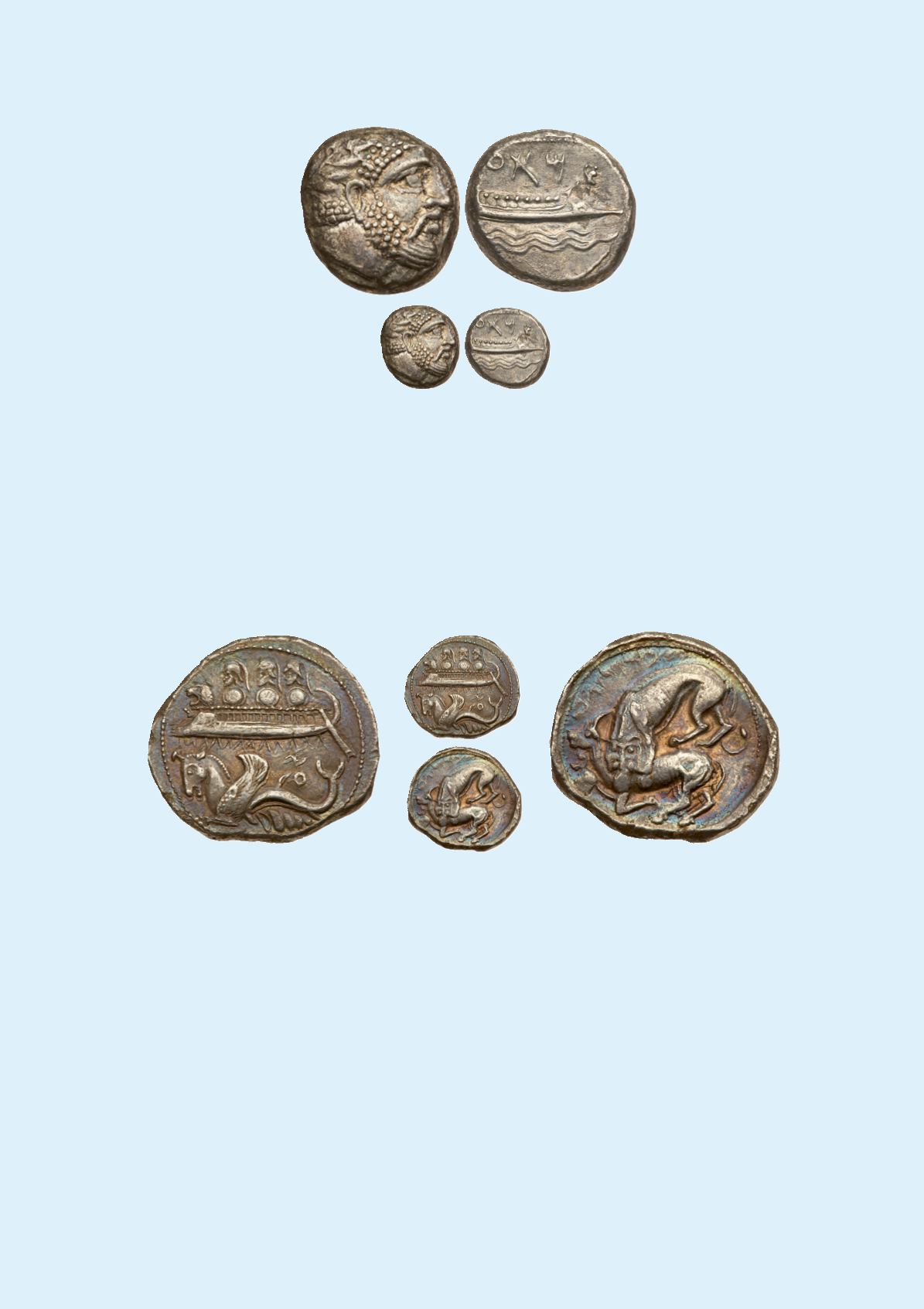

236
Phoenicia, Arados. Uncertain king. Silver Stater (10.38 g), ca. 348-338. Laureate head of Ba’al-Arwad
right. Rev. ‘MAB’ above, galley with Pataikos right; three waves below; all within dotted square border
within incuse square. Betlyon 26; cf. HGC 10, 35. Lightly toned. Extremely Fine.
$750
From the Dionysus Collection.
237
Phoenicia, Byblos. ‘Ozba’al. Silver Shekel (13.28 g), ca. 400-365 BC. Galley sailing left above waves, car-
rying three hoplites; below, hippocamp left above murex shell, Aramaic ‘ZO’ between galley and hippo-
camp. Rev. ‘’Ozba’al, King of Gebal’, lion bringing down bull left. Cf. Betlyon 14 (lacking ‘ZO’); HGC 10,
133. Reverse struck from a somewhat worn die. Lovely natural iridescent tone. Extremely Fine. $1,500
From the Dionysus Collection.
Bybloswas theGreekname given to thenorthernPhoeniciancityof Gebal, whichhas beenconsideredoneof theoldest continuously
inhabited cities in the world. The city was ruled by a local dynasty of kings who were often vassals of the great Near Eastern powers
of Egypt, Assyria, and Persia. This shekel was struck by the obscure Byblian king ‘Ozba’al under Persian domination. The obverse
advertises the naval power of the city by depicting one of its galleys carrying warriors. Indeed, the terrifying power of the Persian
fleet was largely due to the ships and sailors drawn from Phoenician cities like Byblos. The scene of the lion attacking a bull on the
reverse and other variations on this animal fight theme were a commonplace of Near Eastern and especially Persian decorative art.



















